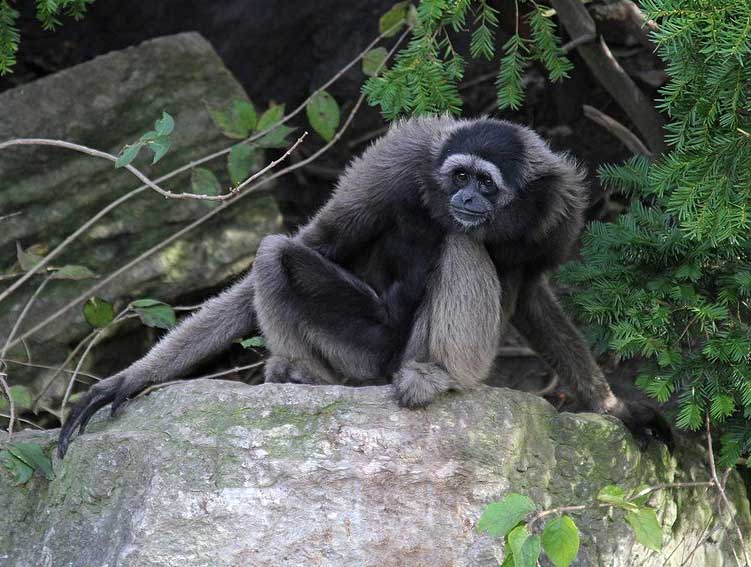Hylobates muelleri (*) Cladus: Eukaryota Name Hylobates muelleri, Martin, 1841 Vernacular names
* Hylobates muelleri on Mammal Species of the World. Müller's Bornean gibbon (Hylobates muelleri), also known as the grey gibbon, is a primate in the Hylobatidae or gibbon family. Unlike other gibbon species, Müller's Bornean gibbon does not show sexual dimorphism in its fur coloration. Its fur is grey or brown colored with a ring of bright fur around its face. On the head it often has a darkly colored cap. With an average weight of 5.7 kg, it ranks among the smaller of the gibbons. Müller's Bornean gibbon is endemic to the island of Borneo, inhabiting the northern and eastern part of the island. In the southwest of the island lives the Bornean white-bearded gibbon; their territories hardly overlap. Grey gibbons are diurnal rain forest dwellers, characterized by the long arms that all gibbons have, with which they brachiate through the trees. They live together in monogamous pairs, and defend their family territory against intruders with long, loud singing, which rings out above all else early in the morning. Their diet consists primarily of fruits. Little is known about the reproductive patterns of this species, but it is thought to be similar to that of other gibbon species. Müller's Bornean gibbon occurs in a number of protected areas, including Betung Kerihun National Park, Bukit Baka Bukit Raya National Park, Kayan Mentarang National Park, Kutai National Park, Sungai Wain Protection Forest and Tanjung Puting National Park in Indonesia and the Lanjak Entimau Wildlife Sanctuary and Semengok Forest Reserve in Malaysia.[2] Subspecies There are three subspecies of this gibbon:[1][3] * Müller's gray gibbon, Hylobates muelleri muelleri
1. ^ a b Groves, C. (2005). Wilson, D. E., & Reeder, D. M, eds. ed. Mammal Species of the World (3rd ed.). Baltimore: Johns Hopkins University Press. pp. 180. OCLC 62265494. ISBN 0-801-88221-4. http://www.bucknell.edu/msw3. Source: Wikispecies: All text is available under the terms of the GNU Free Documentation License |
|


